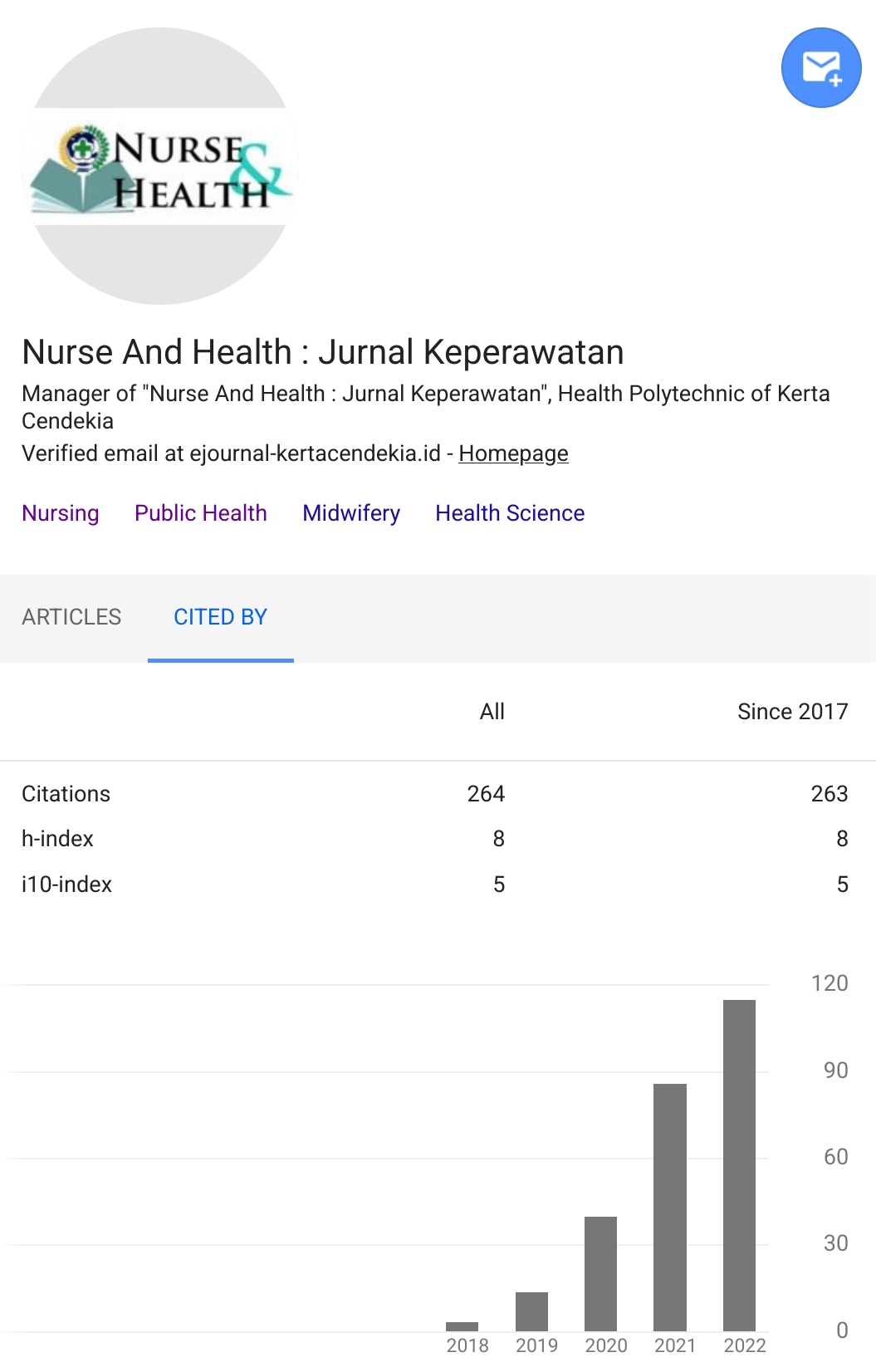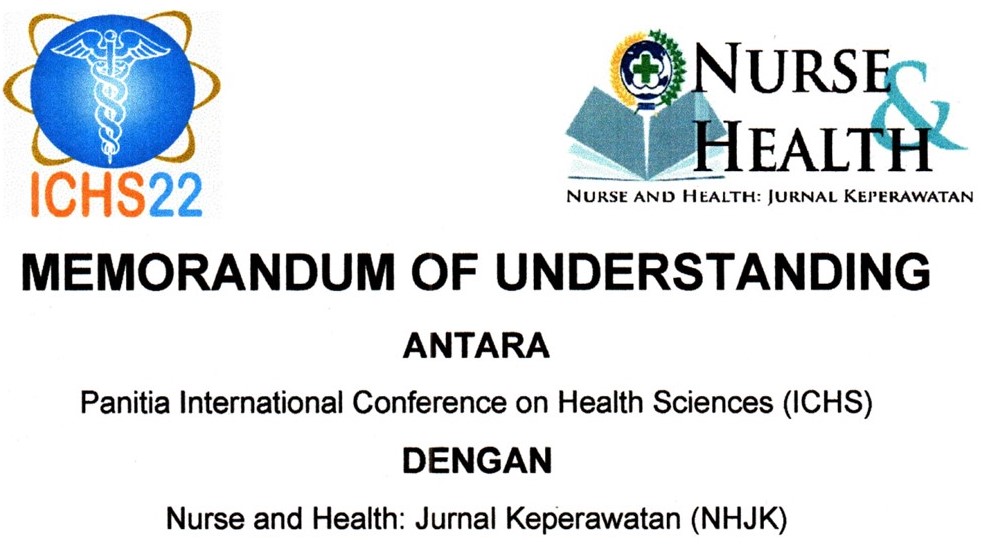VALIDITY AND RELIABILITY TEST OF THE INDONESIAN VERSION OF THE MULTIDIMENSIONAL SEXUAL SELF-CONCEPT QUESTIONNAIRE
Abstract
Background: One comprehensive instrument for assessing different facets of sexual self-concept is the Multidimensional Sexual Self-Concept Questionnaire (MSSCQ). Its adaptation into different languages and cultural contexts is essential for cross-cultural research. Objectives: To assess the reliability and validity of the MSSCQ's Indonesian version in gauging sexual self-concept. Design: Observational research with a cross-sectional design. Methods: The study began with a two-stage translation process of the MSSCQ questionnaire into the Indonesian version. Subsequently, validity and reliability tests were conducted on 30 diabetes mellitus outpatients at Tanjungpura University Hospital using purposive sampling techniques. Data were analyzed using Pearson Correlation with statistical software. Results: All items across the 20 subscales demonstrated validity with r calculated > r table and p-values < 0.05. The Cronbach's Alpha values for all subscales were > 0.70, indicating good internal consistency. Conclusion: The Indonesian version of the MSSCQ is a valid and reliable instrument for measuring sexual self-concept.Downloads
References
Asefa, A., Nigussie, T., Henok, A., & Mamo, Y. (2019). Prevalence of sexual dysfunction and related factors among diabetes mellitus patients in Southwest Ethiopia. BMC Endocrine Disorders, 19(1), 1–8. https://doi.org/10.1186/s12902-019-0473-1 DOI: https://doi.org/10.1186/s12902-019-0473-1
Bois, K., Bergeron, S., Rosen, N. O., McDuff, P., & Grégoire, C. (2013). Sexual and relationship intimacy among women with provoked vestibulodynia and their partners: Associations with sexual satisfaction, sexual function, and pain self-efficacy. Journal of Sexual Medicine, 10, 2024–2035. DOI: https://doi.org/10.1111/jsm.12210
Calabro, R. S., & Alberto, C. (2019). Neuroanatomy and function of human sexual behavior: A neglected or unknown issue?. Brain and Behavior, 9, E01389. https://doi.org/10.1002/brb3.1389 DOI: https://doi.org/10.1002/brb3.1389
De Silva, N. L., Athukorala, T., Gamage, J. L., Katulanda, G., de Silva, P., Sumanatilleke, M., & Somasundaram, N. (2022). Sexual dysfunction among men with diabetes; a cross-sectional study at a specialised diabetes clinic in Sri Lanka. BMC Endocrine Disorders, 22(1), 1–9. https://doi.org/10.1186/s12902-022-01108-1 DOI: https://doi.org/10.1186/s12902-022-01108-1
Djrolo, F., Gninkoun, C. J., Gbessoua, M. L., Hounnou, M., & Fanou, J. (2021). Sexual dysfunction in women with diabetes: Prevalence and associated factors in the Diabetes Center in Cotonou-Benin. Diabetes Complications, 5(1), 1–4. https://doi.org/10.3390/ijerph19042360 DOI: https://doi.org/10.33425/2639-9326.1086
Getie Mekonnen, E., Yeshita, H. Y., & Bishaw Geremew, A. (2021). Sexual dysfunction among men with diabetes mellitus attending chronic out-patient department at the three hospitals of Northwest Amhara region, Ethiopia: Prevalence and associated factors. PLOS ONE, 16(8), e0256015. https://doi.org/10.1371/journal.pone.0256015 DOI: https://doi.org/10.1371/journal.pone.0256015
Mohan, G., Gurbir, S. M., & Tejinder, S. (2023). Sexual dysfunction in diabetes mellitus – An observational cohort study. Apollo Medicine, 20(20). https://doi.org/10.4103/am.am_36_23 DOI: https://doi.org/10.4103/am.am_36_23
Potki, R., Ziaei, T., Faramarzi, M., Moosazadeh, M., & Shahhosseini, Z. (2017). Bio-psycho-social factors affecting sexual self-concept: A systematic review. Electronic Physician, 9(9), 5172–5178. https://doi.org/10.19082/5172 DOI: https://doi.org/10.19082/5172
Roy, S. C., & Andrews, H. A. (1999). Roy adaptation model (2nd ed.). Stamford, Connecticut: Appleton & Lange.
Rye, B. J., & Hertz, S. (2022). University students' sexual identity development as a determinant of sexual self-hood. Sexes, 3(3), 477–491. https://doi.org/10.3390/sexes3030035 DOI: https://doi.org/10.3390/sexes3030035
Saraswati, L. D., Udiyono, A., Sutrisni, D., & Fauzi, M. (2019). Sexual dysfunction among women with diabetes in a primary health care at Semarang, Central Java Province, Indonesia. Kesmas, 14(2), 95–102. https://doi.org/10.21109/kesmas.v14i2.2722 DOI: https://doi.org/10.21109/kesmas.v14i2.2722
Snell, W. E., & Papini, D. R. (1989). The sexuality scale: An instrument to measure sexual-esteem, sexual-depression, and sexual-preoccupation. Journal of Sex Research, 26(2), 256–263. https://doi.org/10.1080/00224498909551510 DOI: https://doi.org/10.1080/00224498909551510
Schaller, S. L., Kvalem, I. L., & Træen, B. (2023). Constructions of sexual identities in the ageing body: A qualitative exploration of older Norwegian adults' negotiation of body image and sexual satisfaction. Sexuality & Culture, 27, 1369–1402. https://doi.org/10.1007/s12119-023-10067-1 DOI: https://doi.org/10.1007/s12119-023-10067-1
Utomo, H. B. (2015). Keterkaitan antara kognitif dan regulasi emosi. Jurnal Pendidikan. https://doi.org/10.13140/RG.2.1.2410.0325
Copyright (c) 2025 Tiara Amalia Mentari, Haryanto, Lidia Hastuti, Imran

This work is licensed under a Creative Commons Attribution-NonCommercial 4.0 International License.
Authors who publish with Nurse and Health: Jurnal Keperawatan agree to the following terms:
- Authors retain copyright licensed under a Creative Commons Attribution-NonCommercial 4.0 (CC BY-NC 4.0), which allows others to remix, tweak, and build upon the authors' work non-commercially, and although the others' new works must also acknowledge the authors and be non-commercial, they don't have to license their derivative works on the same terms.
- Authors are permitted and encouraged to post their work online (e.g., in institutional repositories or on their website) prior to and during the submission process, as it can lead to productive exchanges, as well as earlier and greater citation of published work (See The Effect of Open Access). Authors can archive pre-print and post-print or publisher's version/PDF.






















